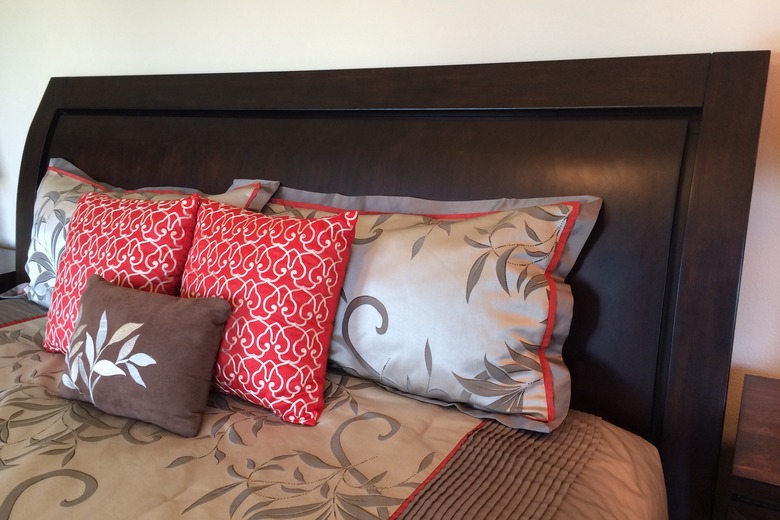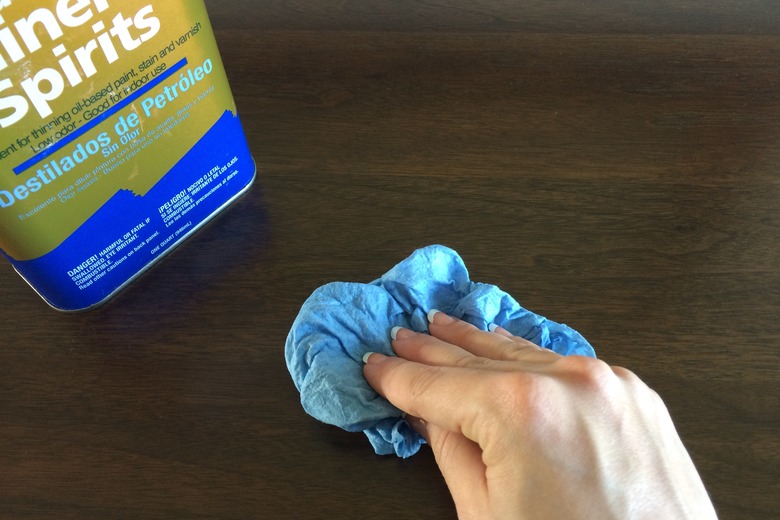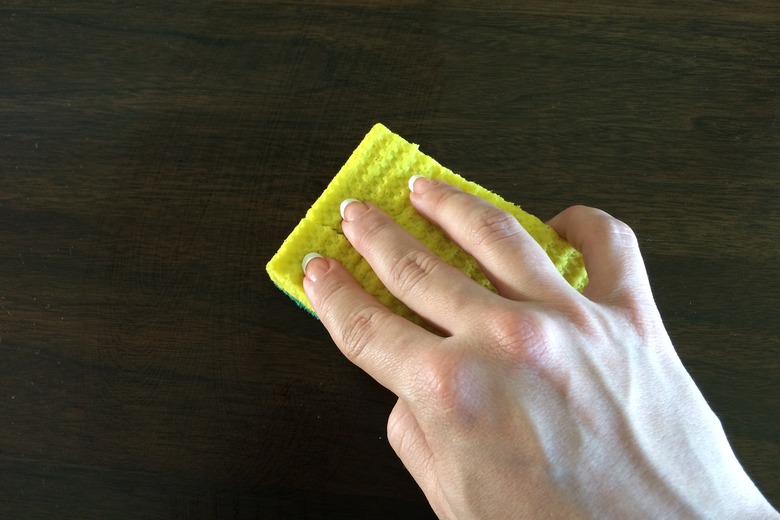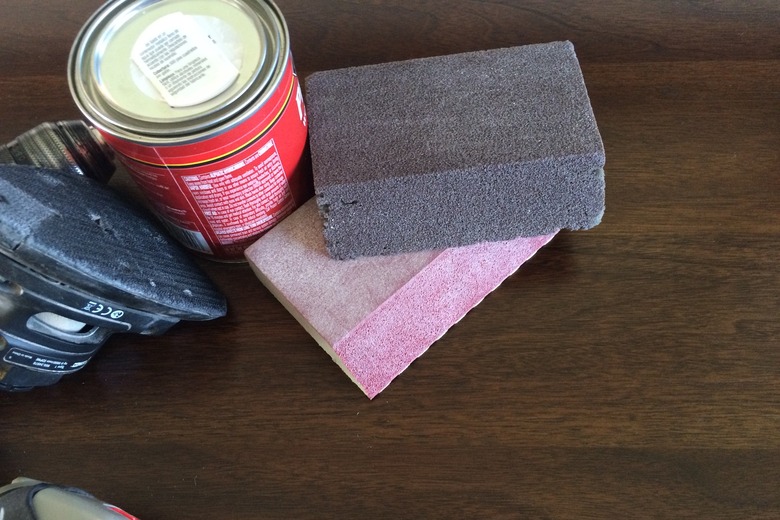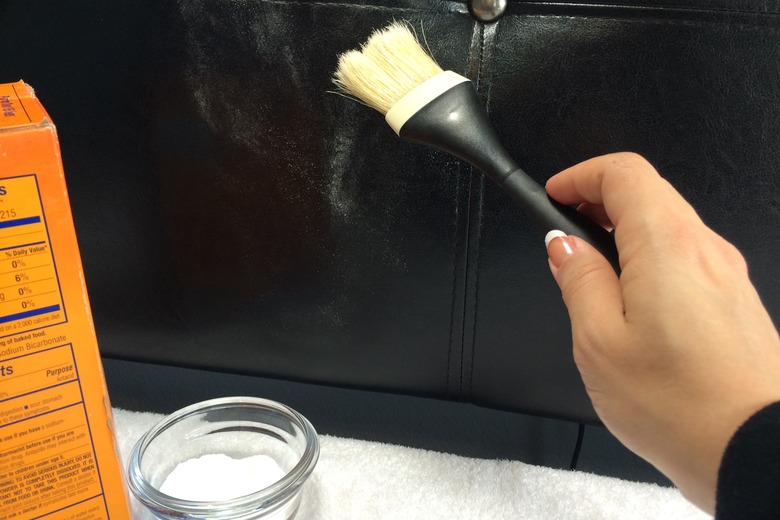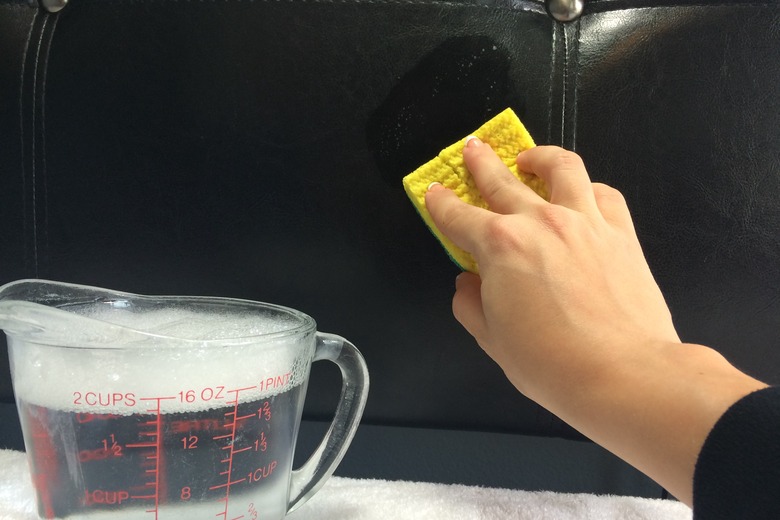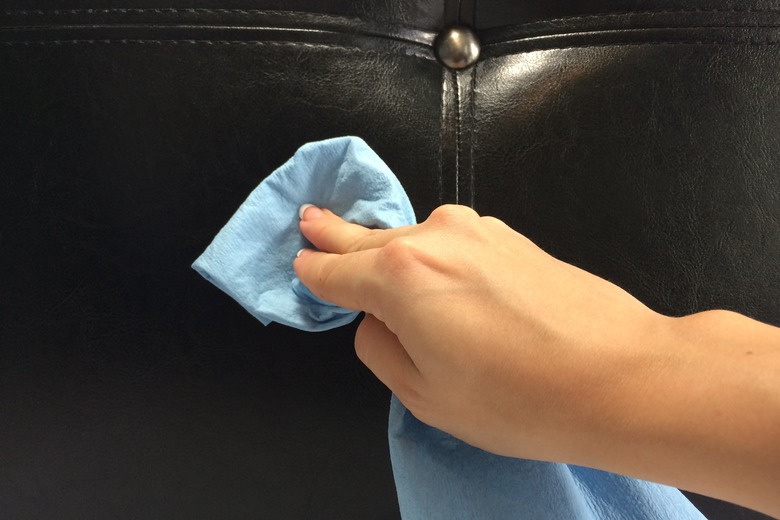How To Remove Scalp Oil From A Headboard
Things Needed
-
Rags
-
Mineral spirits
-
Denatured alcohol
-
Dish detergent
-
Baking soda
Tip
If detergent isn't strong enough to remove the stains from an upholstered headboard, try dry cleaning solvent. This is a volatile petroleum product with a strong odor, so be sure to provide plenty of ventilation. The smell should dissipate in a few hours.
Protect your headboard by hanging an antimacassar from the top and pinning or stapling it to the back of the headboard. You can also make sure your pillows are always between your head and the headboard.
In Victorian times, men dressed their hair with macassar oil, and to prevent the oil from soiling furniture, homemakers deployed decorative cloths called antimacassars in strategic places, such as chair backs and headboards. The use of macassar oil has declined, but antimacassars are still necessary, especially on headboards. If your bed doesn't have one, your natural scalp oils, as well as any rejuvenating styling products you use, can disfigure it. These oils can degrade a wood finish, which may require finish repair, and if they remain on upholstery, they can cause permanent discoloration. Solvents and detergents can handle most stains, though.
Wood Headboards
Step 1
Moisten a rag with mineral spirits and wipe the affected area vigorously. The solvent dissolves the oil so you can wipe it off with the rag. You can also use denatured alcohol — it's safe for most finishes.
Step 2
Mix a capful of dish detergent with a pint of warm water and moisten a sponge with the solution. Wipe down the area until the sponge no longer shows signs of soiling. Dry the area with a clean cloth when you're done.
Step 3
Inspect the finish, and if you see any dark areas that you couldn't clean away, it means the oils have soaked in. To restore the color, you need to sand off the finish, restain the wood and apply a new finish. It's best to remove the headboard and refinish the entire face in a workshop or garage to ensure color uniformity.
Upholstered Headboards
Step 1
Dust baking soda onto the affected area and allow it to remain for several hours. Then vacuum it off. Baking soda absorbs surface oils while it deodorizes.
Step 2
Mix a capful of dish detergent with two cups of cool water and apply this solution to the stained area with a sponge. Blot the area dry with a clean cloth.
Step 3
Apply clean, cold water to the area you just treated, using a sponge, and blot it dry with another clean cloth. Repeat until the area is no longer soapy.
